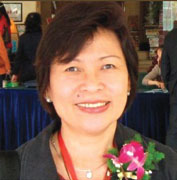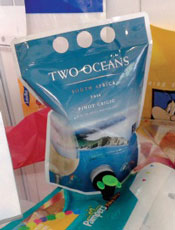Also, download this story from the electronic issue here
Indonesia, one of Asia’s tiger-cub economies, is relishing its “growing-up” pains from the political and economic reforms, for an outcome of steady growth in the years ahead, says Angelica Buan in this report.
Citing the 2014 UK Trade and Investments data, Indonesia, which is currently the world’s 16th largest economy, has the potential to move up to the fifth rank by 2030.
With a sizeable population that is increasing by an estimated 4.5 million/year, as well as a growing middle class that is forecast to balloon to 141 million by 2020, it accounts for nearly half of Southeast Asia’s gross domestic product (GDP). The region’s largest economy is also witnessing the build-up of its domestic consumption, which accounts for more than half of the country’s GDP.
Meanwhile, Amsterdam-based ING Bank’s International Trade Study for 2012-2017 said that Indonesia’s growth, expected at an average of 6.5% through 2017, may be slow yet steady. While this is comparatively lower than the average of other Asian countries, it is higher than the 3.7% global average.
A history of tested competence
Indonesia’s economic competence has endured critical milestones, including the pre and post- Asian crises in 1997, whereby the country’s growth and currency plummeted, according to a report by the United Nations Industrial Development Organisation (UNIDO).
Nevertheless, Indonesia’s manufacturing sector has buoyed up the economy, even though the latter barely rode out the impact of manufacturing production globalisation, and liberalisation and free trade agreements before the Asian crisis.
In order to get the growth back on track, the Organisation for Economic Cooperation and Development (OECD), an international organisation comprising 34 countries, recommends that productivity growth must be complemented with structural reforms, including ironing out issues in infrastructure, skilled labour shortages, and regulatory barriers to the country’s competence in the global market
Such conditions are already being addressed by the government of newly appointed President Joko Widodo, through radical trade and policy reforms. Amongst the considered pressing points is easing of restrictions in Foreign Direct Investments (FDIs) on certain industries, including the plastics industry.
Weaning off imported plastics materials
Pitted against other dominant Asian countries, Indonesia can easily outpace the other growing economies like Malaysia, Thailand, and the Philippines. Nonetheless, although not entirely a liability, the world’s fourth largest nation, with a population of 253.6 million, has yet to wean itself from being import-dependent.
The local plastics industry, particularly the downstream sector, continues to rely on imported raw materials, according to the Global Business Guide. This practice is stunting the sector’s potential for growth on a global scale.
Along with raw materials, dependence on imported machinery and equipment is also another hindrance to growth of the plastics sector, according to UNIDO, driven by Indonesia’s relatively low capital goods industry.
Meanwhile, the Indonesian Downstream Plastics Producers Association (Aphindo) has said that increasing the competence of the downstream industry would entail making available locally a sufficient supply of raw materials. Thus, by doing this, it would lower costs of production as dependency on imported contents could be minimised. Imported raw material for the downstream industry is valued at US$8.5 billion/ year, according to Aphindo.
Seeking tax facilities, as well as removing import duties on upstream products that could not be produced locally, would also promote cost efficient production, said Aphindo. Import duties from non-ASEAN countries are levied at 10%; and 5% for ASEAN member states.
Staying competitive with imported machines
There is a growing global trend of importing plastics processing machinery. Market research firm Freedonia forecasts the demand for imported plastics processing machinery to advance by 7% annually to US$37.6 billion through 2017. This is in sync with the rising resin consumption, and production for plastics packaging, which Freedonia says will be the largest single market for plastics processing machinery for the given period.
The ING Trade Study projected that by 2017, Indonesia will mainly import fuel, industrial machinery and chemicals, which together would account for 45% of the country’s total imports.
At the P&R exhibition held in Jakarta, in November last year, local processors flocked to the show to view overseas-made machines, from China, Taiwan, Singapore, and Europe.
Some European machine exhibitors at the show admitted that the costs of the machines factored largely in gaining potential clients. Thus, more enquiries were received by Chinese exhibitors displaying China-made machinery. However, the European (and other non-Asian) machines at the show were mostly for large production outputs, whereas company start-ups and medium enterprises, which require smaller machinery, would opt to buy cheaper machines from China.
Albert Indradjaja, Senior Sales Consultant for LK Indonesia, a sales arm for Hong Kongheadquartered die-casting machine manufacturer LK Technology, confirmed that Chinese machines were quite popular. He said, “This is because the Indonesian plastics sector has a large number of small processors, mostly family-owned, that have an output of about 500-10,000 pieces a day.” According to Indradjaja, Chinese machines were more suitable for local producers in the houseware segment, due to the affordability factor.
Meanwhile, technology appears to be less important for most of the smaller processors, for the reason that technology demands a higher price tag.
Robert Plocar, Managing Partner at CIMI Singapore, Indonesian sales network for Italy-based Caccia Engineering’s corrugators, suggested that Indonesia lags behind in the latest technologies and hence, processors need to be educated on the importance of how technology can improve productivity.
Alfeo Bonato, Export Manager for Italian pipe machine manufacturer Bausano & Figli, also observed that traditional machinery and products are preferred in Indonesia.
According to Johan Yang, Executive Vice- President of Resindo, a new Indonesian company representing Netherlands-headquartered thermoplastics compounder Resin, importing machines that allow for quality output may be necessary if Indonesia wants to be competitive.
Yang said that the country has an improving investment climate and although change may not be immediate, Indonesia is nevertheless heading towards the right direction.
Resindo is starting up a plant in Jakarta this year. It will produce automotive/packaging compounds and anti-microbial masterbatches. The plant will serve other markets in the region, such as the Philippines, Thailand and Vietnam, as well as India and Australia.
Packaging a growth sector
Packaging machines scored sales and leads at the P&R Indonesia event, an indicator of the vigorous nature of the sector.

Ariana Susanti, President of the Asian Packaging Federation (APF) and Director of the Indonesian Packaging Federation (IPF), confirmed that the domestic consumption for plastics packaging is strong, owing to the emerging middle-class and large population.
The robust private spending, driven by the growing middle class allows the Indonesian packaging industry to grow alongside other sectors, particularly that of the food and beverage industry,” Susanti said.
Nevertheless, the sector has certain challenges to overcome. According to Susanti, packaging also follows certain trends, and there are multifarious factors that influence these trends. “The economy may play a central role. Certain factors have an impact irrespective of the performance of the economy, such as the ageing population, smaller households, increasing requirement for convenience, rising health awareness; and the emerging “on-the-go” lifestyles,” she explained.
The growth of the modern retail sector in Indonesia, such as convenience stores, is attracting patronage from customers who usually shop in conventional retail stores -- a shift that will have positive impact on product packaging.
Furthermore, the Indonesian middle-class consumers have become “cost savvy” in terms of their choices of product packaging, resulting in more demand for novel packaging formats, such as standup pouches, and less of glass or can packaging. Stand-up pouches are lightweight and convenient to carry, hence the preference over glass or cans.
German flexible film machine manufacturer Lemo Maschinenbau, an exhibitor at P&R Indonesia, also showcased various packaging options, including a stand-up pouch with a spout that has been undertaken by South African winery Two Oceans.

Reiner Weiss, Sales Representative of Lemo, said that the company, which already has 15-20 Indonesian processors using their machines, is hoping the local market will adopt this type of innovative packaging.
Apart from the consumer factors, improving packaging quality to grab a bigger market share is vital. This can be achieved with technology, according to Susanti.
At the show, blow moulding machinery maker, Switzerlandheadquartered Sidel, is making headway in the local market with technology that can create new shapes and ergonomic designs for liquid packaging. Sidel’s Zone Communications Director, Southeast Asia Pacific, Magali Rioult Denorme, said that this is because Indonesia is a growing market for beverages.

The company, which has plants in Italy, France, China and India, has already a long list of innovative packaging designs, including the FreeShape PET bottle design. This, Sidel says, is for “sensitive beverages that can be filled hot or aseptically while retaining the bottle’s flexible shape format.”
In a nutshell, Susanti said that improving the production process and product appearance is an important element for processors to ensuring an enhanced quality and increased market share.
“As a product identity, packaging can make use of technology and creative designs,” she said, adding that this strategy can help enhance the country’s competitiveness in the global market.
(PRA)




























